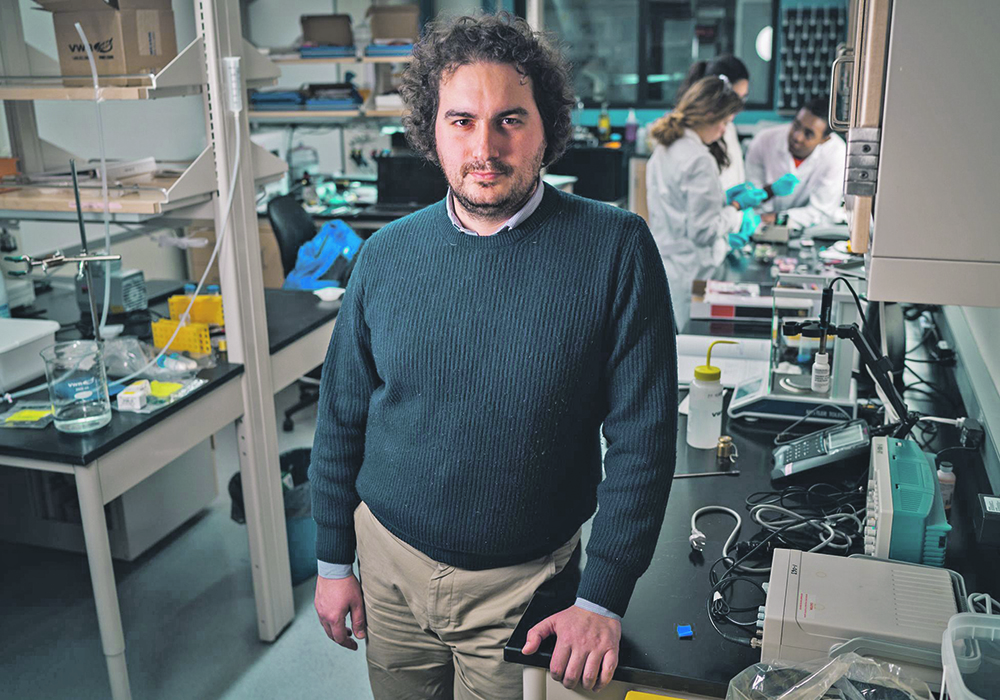That breakfast glass of orange juice may not be around in the future if an insect called the Asian citrus psyllid, which is host to a destructive bacterium, continues its invasion of Florida’s orange trees.
The bacterium infects the phloem, the tissue in plants that transports compounds like sugar glucose to where they are needed.
The bacterial infection causes citrus greening disease that forces fruits to stay green, become bitter and never ripen.
Trees are stunted with partial defoliation and eventually die. The phloem is difficult to reach with conventional pesticide treatments and has devastated millions of acres of orange groves in Florida and other citrus-fruit-growing states. The disease threatens a $9 billion industry.
Read Also

Growing garlic by the thousands in Manitoba
Grower holds a planting party day every fall as a crowd gathers to help put 28,000 plants, and sometimes more, into theground
In response, the United States Department of Agriculture has reached out to Massachusetts Institute of Technology engineers to develop a system to treat citrus trees.
“In biomedicine at MIT there is a big push for precision medicine and there is also a big push for precision agriculture,” said Benedetto Marelli, assistant professor of civil and environmental engineering at MIT. “I was thinking maybe we could bridge the two. But microneedles in humans are very short. They are not applicable for plants and we wanted microneedles for plants.”
Marelli said sprayed chemicals can run off the plant, go into the soil and possibly become an environmental hazard. The development of plant-applied microneedles offered potential. USDA’s request was particularly timely even though the research team had not been previously aware of the citrus greening disease crisis and how much farmers and stakeholders depended on the citrus fruit industry.
“They were looking for a solution that would be ready very quickly, like in one or two years,” said Marelli. “We started to explore the microneedles, which we call phytoinjectors and how we could deliver a payload in the phloem.”
The researchers developed an array of microneedles made from a silk-based biomaterial. But it was not straightforward. In human use, microneedles can biodegrade naturally in the body’s moisture. But plants have less water and the initial needle design did not dissolve sufficiently to deliver the payload of pesticide or other molecules into the phloem.
They had to design a new material but still stayed with silk as the basis for the needle itself. Silk has a unique strength, an ability to degrade into tiny nanometre-scale pieces so they do not interfere with the plant’s internal structure or clog the vascular systems, and silk does not present any adverse side effects.
According to a news release, the researchers used biotechnology tools to increase the silk’s ability to attract fluid while remaining strong enough to penetrate the plant’s epidermis then degrade to nano-scaled size. They tested the new material on laboratory tomato and tobacco plants and could trace injected, fluorescent molecules moving all the way through the plants from leaves to roots.
The microneedles can be made in a variety of sizes and shapes, and can deliver material specifically to a plant’s roots, stems, or leaves, into its xylem (the vascular tissue involved in water transportation from roots to canopy) or phloem. While the lab tests were based on tomato and tobacco plants, the system could be adapted to almost any crop.
The microneedles can not only deliver targeted payloads of molecules into the plant, but they can also be used to take samples from the plants for lab analysis.
The breakthrough could help solve a variety of challenges, such as delivering micronutrients to a plant, delivering a pesticide to kill the bacterium carried by the Asian citrus psyllid, delivering a payload of drugs, or delivering genes to change the gene expression and basically engineer a plant.
“The system will work on both small plants like tomatoes and larger plants like orange trees,” said Marelli.
The big issue now is scaling up the system to a commercial level, one that can be applicable for agricultural-scale applications.
“There is a lot of variation among (plants), really,” said Marelli. “You need to think about having devices that are plant-specific. For the future, our research interests will go beyond antibiotic delivery to genetic engineering and point-of-care diagnostics based on metabolite sampling.”
The report stated the design of plant‐specific biomaterials to fabricate devices for drug delivery directly into plants opens new avenues to enhance plant resistance to biotic and abiotic stresses. It also provides new tools for diagnostics and enables new opportunities in plant engineering.
The research was published recently in Advanced Science.

















